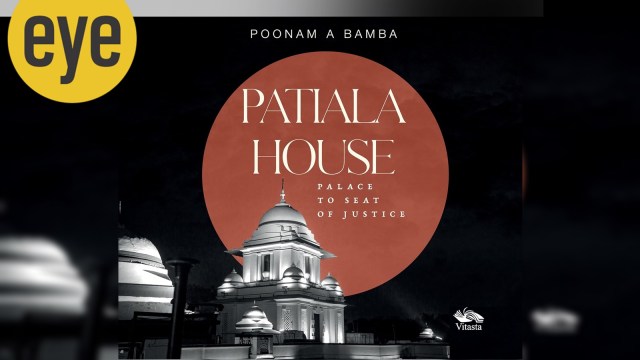From a British war room to WHO headquarters, the journey of Patiala House Court
Former Justice Poonam A Bamba's Patiala House: From Palace to Seat of Justice captures a 100-year-old history involving ghosts, British colonisers and judiciaries
 A fascinating history has been delineated by former Justice Poonam Bamba in Patiala House: From Palace to Seat of Justice (Rs 2,999, Vitasta Publishing) (Source: Justice (retd) Poonam A Bamba)
A fascinating history has been delineated by former Justice Poonam Bamba in Patiala House: From Palace to Seat of Justice (Rs 2,999, Vitasta Publishing) (Source: Justice (retd) Poonam A Bamba)From a man who posed as Prime Minister Indira Gandhi and tricked a bank official to pay him Rs 60 lakhs to the men who assassinated her, one thing was common — they all had to step foot in Delhi’s Patiala House Court before ending up behind bars. Having disposed of over 4 lakh cases till date, the court has an origin story spanning more than 100 years, with ghosts, British colonisers and the judiciary all in the mix. That fascinating history has been delineated by former Justice Poonam Bamba in Patiala House: From Palace to Seat of Justice (Rs 2,999, Vitasta Publishing), an effort that took her seven long years.
In 1926, the court complex was allotted by the British to Patiala’s prince Bhupinder Singh, and became one of those Delhi residences which princely rulers visited to pay homage to King George V. But Bhupinder didn’t build on the plot — that was done after his death by his son Yadavindra, a “sobre and poise” man. During World War 2, the complex found use as a British war room and, later, as a regional office for the World Health Organization.
It was only after 1969 that the Delhi High Court started functioning from Patiala House. In 1978, the district court shifted from Parliament Street to Patiala House, and today, the 31,000 square-meters complex has a motor accidents tribunal, two family courts, a plethora of civil courts, and special courts designated for matters involving the Unlawful Activities (Prevention) Act and Narcotic Drugs and Psychotropic Substances Act. It also has dispensaries, a library, a creche, a ‘de-stress’ room, and a ‘Justice Clock’ — an LED which displays the status of various cases being heard at the Court.
 It was only after 1969 that the Delhi High Court started functioning from Patiala House. (Source: Justice (retd) Poonam A Bamba)
It was only after 1969 that the Delhi High Court started functioning from Patiala House. (Source: Justice (retd) Poonam A Bamba)
Perhaps the most fascinating part of the book are the historical anecdotes brought out by Justice Bamba. Among these are stories of a room that is rumoured to be haunted by a ghost. “Raat ke 12 baje tak naachne ki awaz aati hai (You can hear people dancing till 12 am),” an old caretaker told Bamba as she researched the book. Even shoe marks were noticed on the roof of the District Judge’s courtroom, which the caretaker considers proof of the ghost’s existence. “I was never haunted… thankfully,” says Bamba.
The next part of the book describes famous trials held in the court – Indira Gandhi’s assassination, the Uphaar cinema fire, Jessica Lal’s murder, the Delhi High Court bomb blast and various others. Since she wanted the book to be concise and lightweight, “this part was tough,” said Bamba, who had three stints in the court, as Additional Sessions Judge (2008 – 2010), Special Judge CBI (2013 – 2015), and District and Sessions Judge (2017 – 2019).
Another challenge was gathering old newspaper clippings which are sprinkled in the book. Data for the book was sourced from various archives of Nehru Memorial Library. Bamba also met Kamaljeet Kaur, aunt of former Punjab CM Amarinder Singh, who was a temporary resident of the erstwhile palace for about six years. Kaur told Bamba that many migrants from Pakistan also stayed at the Palace.
“I started feeling like a princess… I experienced its royal aura,” says Bamba reminiscing of the days when she would sit in the Principal District and Sessions Judge’s room. Knowing the royal history of the Court would have definitely added to her experience. “Each corner of a place has a tale to tell… it’s just that nobody has the time to listen,” she adds.





- 01
- 02
- 03
- 04
- 05


























